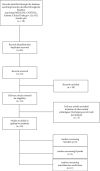Pain Management Strategies before Pan-Retinal Photocoagulation for Diabetic Retinopathy: A Systematic Review
- PMID: 39502493
- PMCID: PMC11535190
- DOI: 10.1155/2024/6662736
Pain Management Strategies before Pan-Retinal Photocoagulation for Diabetic Retinopathy: A Systematic Review
Abstract
Purpose: This systematic review aims to consolidate key findings regarding the efficacy of pain relief medications administered prior to pan-retinal photocoagulation (PRP) for diabetic retinopathy (DR).
Methods: A comprehensive search of major databases from 1993 to 2023 was conducted. Clinical trials comparing pain relief drugs before PRP in patients diagnosed with DR requiring PRP treatment were eligible for inclusion. The assessment of pain scores involved the use of various scales, such as the visual analog scale (VAS), numerical rating scale (NRS), verbal rating scale (VRS), and other ordinal pain scales. In addition, laser parameters were taken into consideration during the analysis.
Results: Twenty-two clinical trials from initial 150 studies were included in the review. Nine studies evaluated the pain relief effects of nonsteroidal anti-inflammatories NSAIDs (selective NSAID and nonselective NSAID), two studies compared the effects of opioids (conventional opioids and atypical opioids), and eleven studies investigated the effects of benzodiazepines, lidocaine, and other sedatives.
Conclusion: This review synthesizes findings from multiple studies reporting pain as an adverse outcome of PRP in patients with advanced DR. Based on the evidence from reviewed clinical trials, the administration of lidocaine 2% via transconjunctival, retrobulbar, or peribulbar block along with specific NSAIDs, such as topical ketorolac administrated 24 hours before treatment or oral diclofenac potassium (50 mg) prior to PRP, demonstrated beneficial effects among patients with DR.
Copyright © 2024 Mohammadkarim Johari et al.
Conflict of interest statement
The authors report no commercial or proprietary interest in any product or concept discussed in this article.
Figures
References
Publication types
LinkOut - more resources
Full Text Sources
Research Materials



